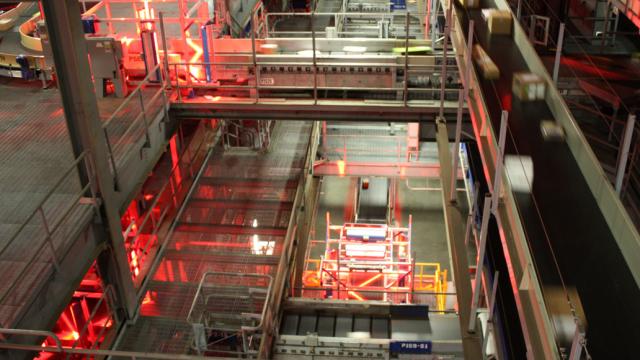Just before midnight, UPS’s Worldport in Louisville, Kentucky begins to come alive. Boeing 757s start roaring overhead. Packages whoosh by on miles of conveyer belts. Before the sun is up, 1.6 million packages will be unloaded and loaded again, sent along toward their final destinations.
As magically as packages seem to appear on our doorsteps, our online shopping habits are made possible by an invisible infrastructure: lifts, conveyer belts, scanners, tilt trays. It sounds pretty banal until you stop to consider the sheer scale of it. At UPS’s worldwide hub, I saw rivers of cardboard and Tyvek, merrily flowing to the tune of computer algorithms.
It’s technology that makes the inhuman volumes possible. At its peak, UPS’s international hub sorts through nearly 7000 packages each minute. When the facility first opened in 1982, they manually sorted just 2000 packages all night.
Because Worldport handles next-day deliveries, it jolts awake at night, when the rest of the country is suspended in sleep. Two-thirds of the work is done at night, with over a hundred planes coming in after 11 pm. I arrived at Worldport at 10, just before the action all started.
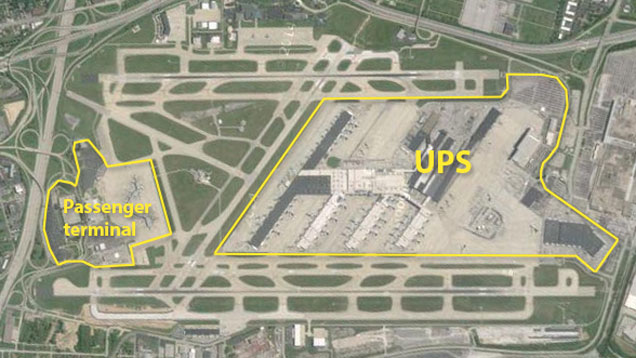
By daylight, for humans, Louisville International Airport is a small regional airport flying passengers to two dozen or so US cities. The “International” part of its name comes into effect at night, when UPS takes over the airport’s two runways, landing aircraft from as far away as Hong Kong and Bonn, Germany. The physical space devoted to cargo planes dwarfs the single passenger terminal. Worldport covers 483,000 square metres of land, or 90 football fields.
UPS began building out its Louisville regional hub to become Worldport in 1999. Why Louisville? Location and weather. The city has mild winters, and it’s a two-hour flight or less from 75 per cent of the US population.
The Brains
I began my tour at the Global Operations Center, the brains of the whole thing. With row after row of screens and cubicles, it basically looks like any corporate office, beige and devoid of sunlight. It’s not like there’s much point in windows when you’re working in the dead of the night.
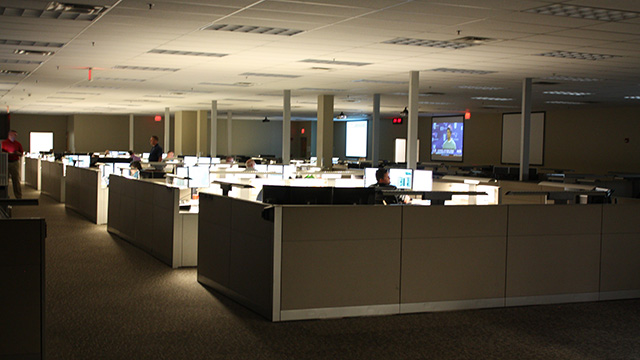
The overnight workers here handle weather predictions, crew scheduling, flight control, aircraft maintenance, and contingencies. With dozens of aircraft scheduled in the air every night, every little problem can set off a cascade of problems. A typical night sees 20 or 25 issues, ranging from thunderstorms to a sick pilot.
UPS keeps “hot spares,” about a dozen planes ready to take off in 30 minutes or less. The spares can fly in to pinch hit wherever needed, and they’re located all over the U.S. as well as in Shenzhen and Bonn.
The worst possible scenario? Snow in Louisville on Christmas, which is exactly what happened in 2004. Mike Mangeot, UPS’s publicity director, remembers the mess then. With snow making the roads in Louisville inaccessible, the sort facility was short-staffed, and any staff that did make it — office workers, included — were redeployed to sort packages.
Another critical piece of cargo airline infrastructure that we might not think about are these: flight simulators for training the pilots. While I waited for Worldport’s sort facility to get going for the night, I learned to fly a plane.
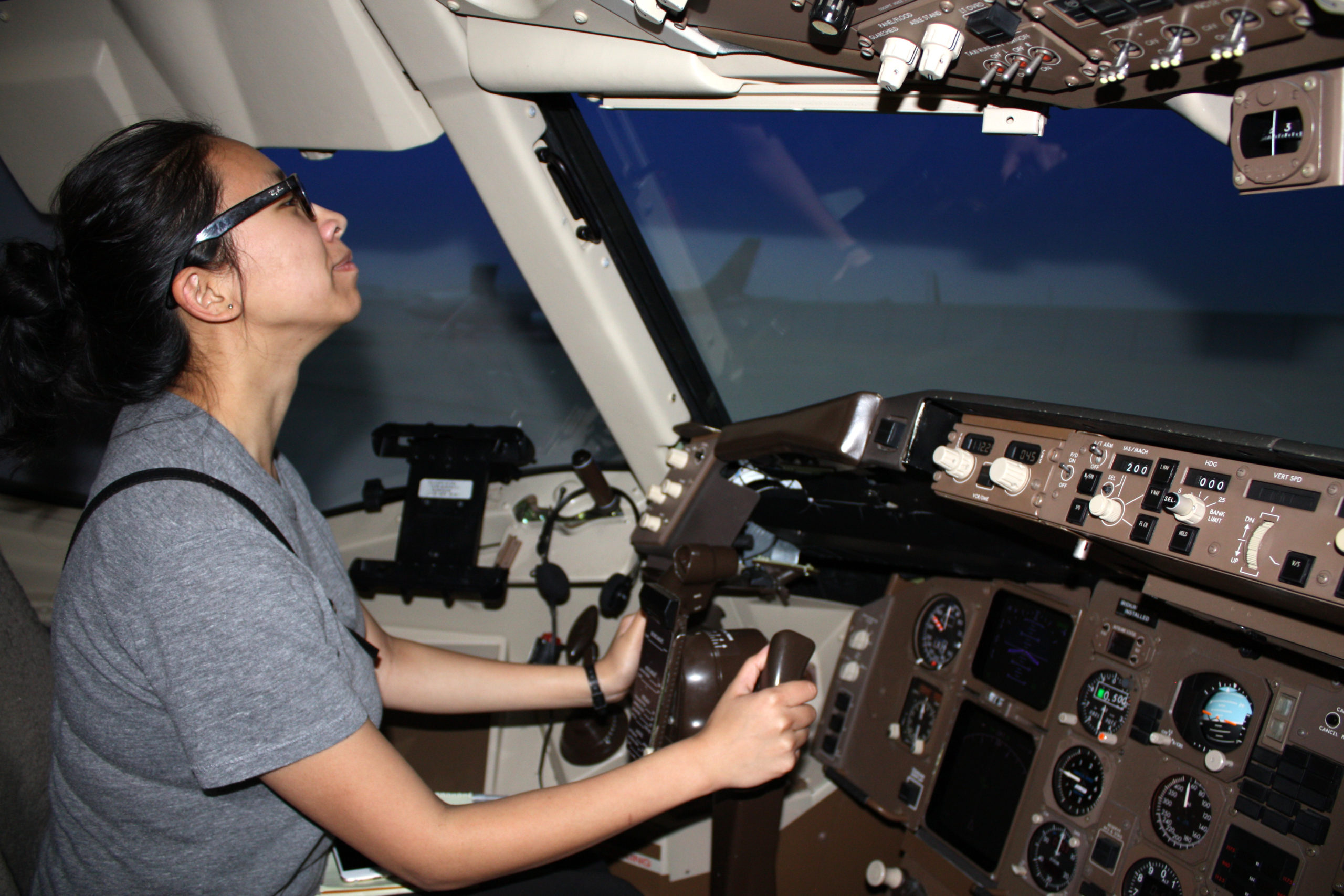
Just kidding, I crashed it twice. They cut me off before I could do any more damage. But with adrenaline pumping, it was time to enter the sort facility.
The Muscle
“One point two million”, Mangeot mysteriously incanted to me as we walked inside. I only understood his comment when I looked down: The floor was riddled with 1.2 million wheels and ball bearings just poking up past the surface. It did not seem friendly to feet. And that’s when I understood a more fundamental thing about this place: This sort facility is designed to accommodating things, not humans. And this wheel-ridden floor is designed for moving heavy loads, not for being trod upon by humans.
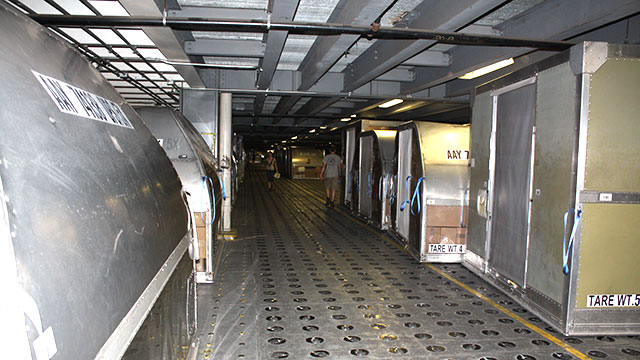
But humans there still are here, carrying out the tasks machines still cannot — at least not cost effectively. They’re mostly local college students, working overnight for UPS through a program that defrays the cost of tuition. The human workforce swells during the holidays, when the number of packages doubles.
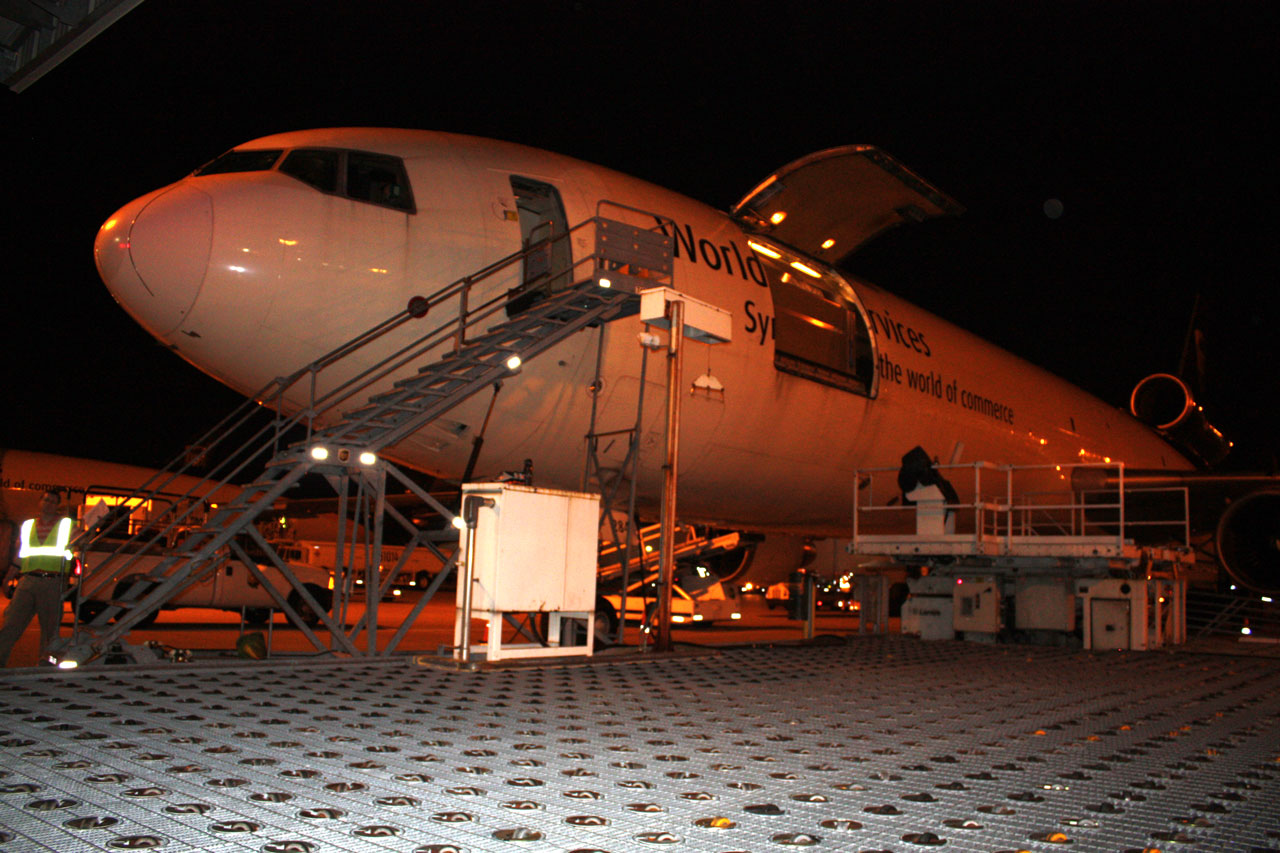
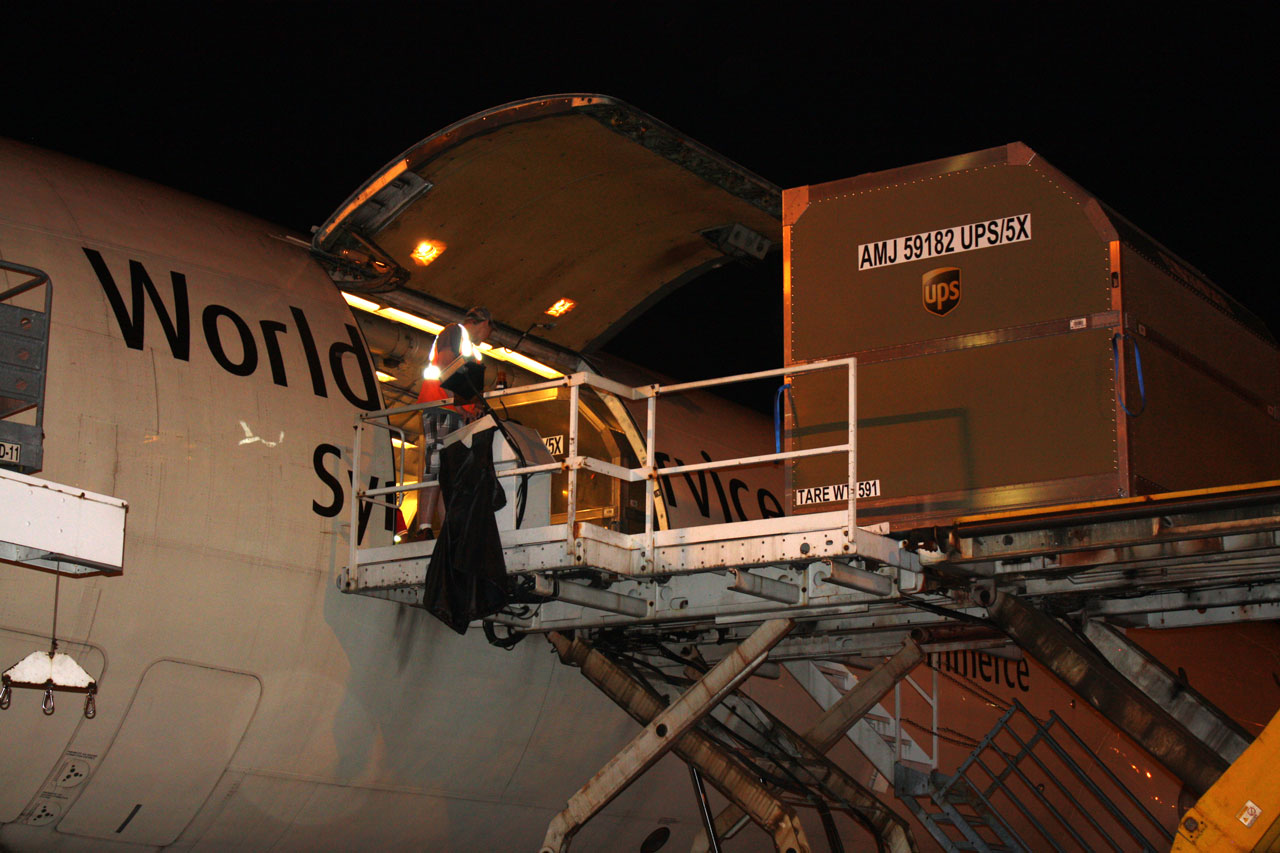
Cargo comes off the planes inside giant Unit Load Devices, closet-sized containers made of plastic and aluminium. Each ULDs comes packed with an array of packages and parcels from a single location. Since it was the week before Mother’s Day when I visited, there was ULD after ULD of flowers. Mangeot tells me they’re also developing new ULDs, lighter and more fireproof to accommodate the greater volumes of electronics UPS now ships. Each loaded ULD can weigh up to two tons, but just two to four people can drag them to a sorting station, thanks to all the wheels on the floor.
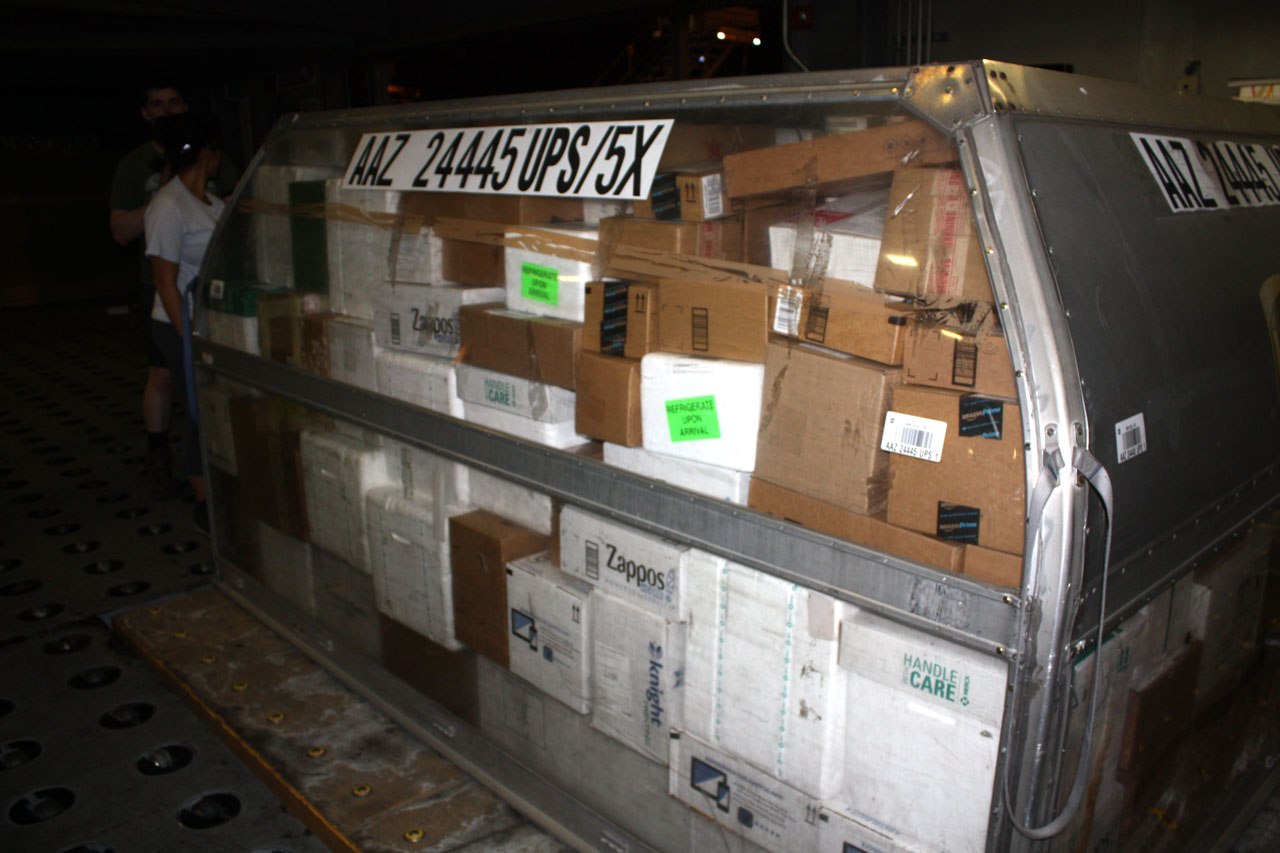
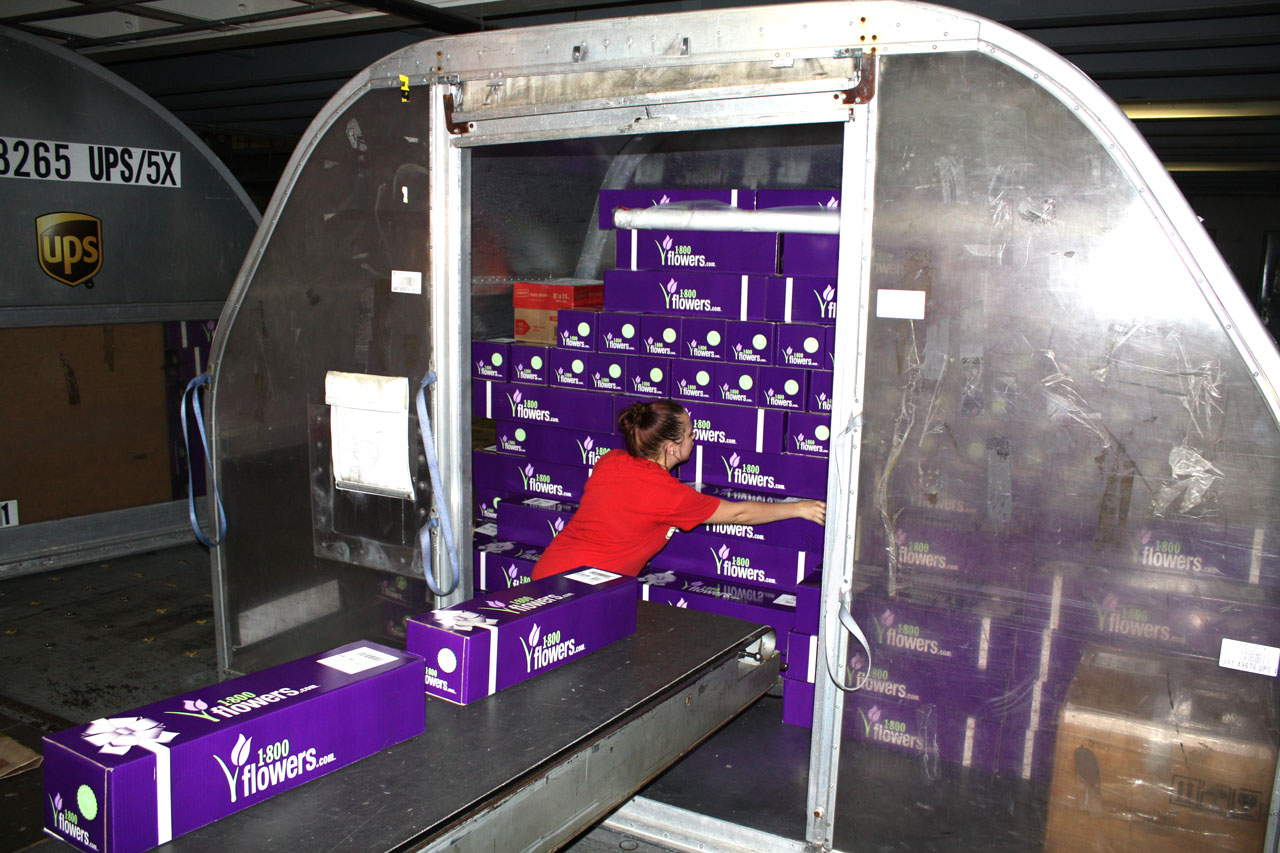
A worker then opens up each ULD, which can contain any size and variety of packages. Here, the packages are put on designated conveyer belt for one of three streams: parcels, small sort (envelopes and small packages), and “incompatibles,” which are oversized or oddly shaped packages.
The incompatibles are separately scanned and dumped into standardised trays that will carry them through the rest of their journey. Sometimes, you get a truly weird packages. Like these, well, unpackaged mufflers.
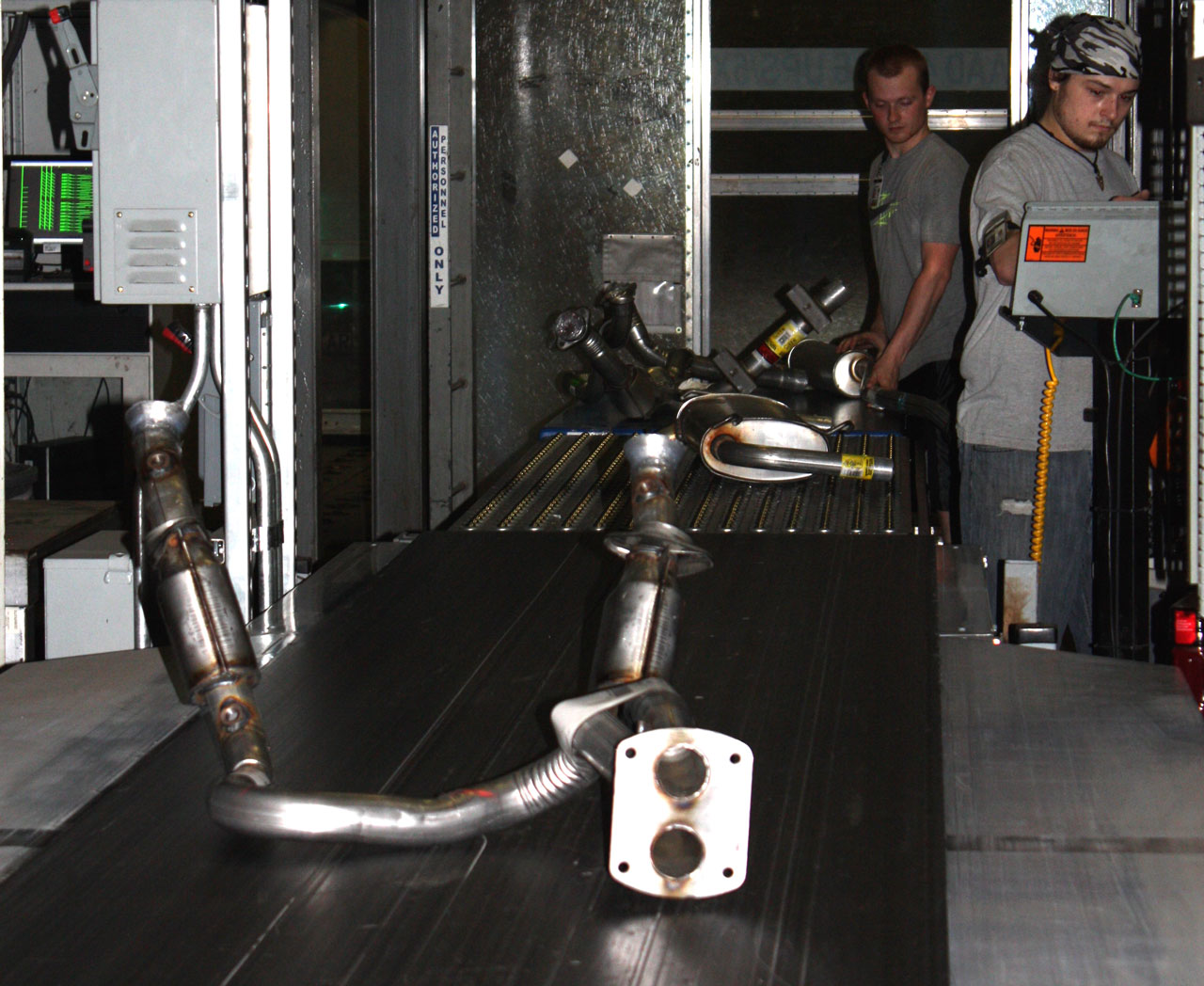
Conveyer belts carry the small sort to the small sort area, mapped below.
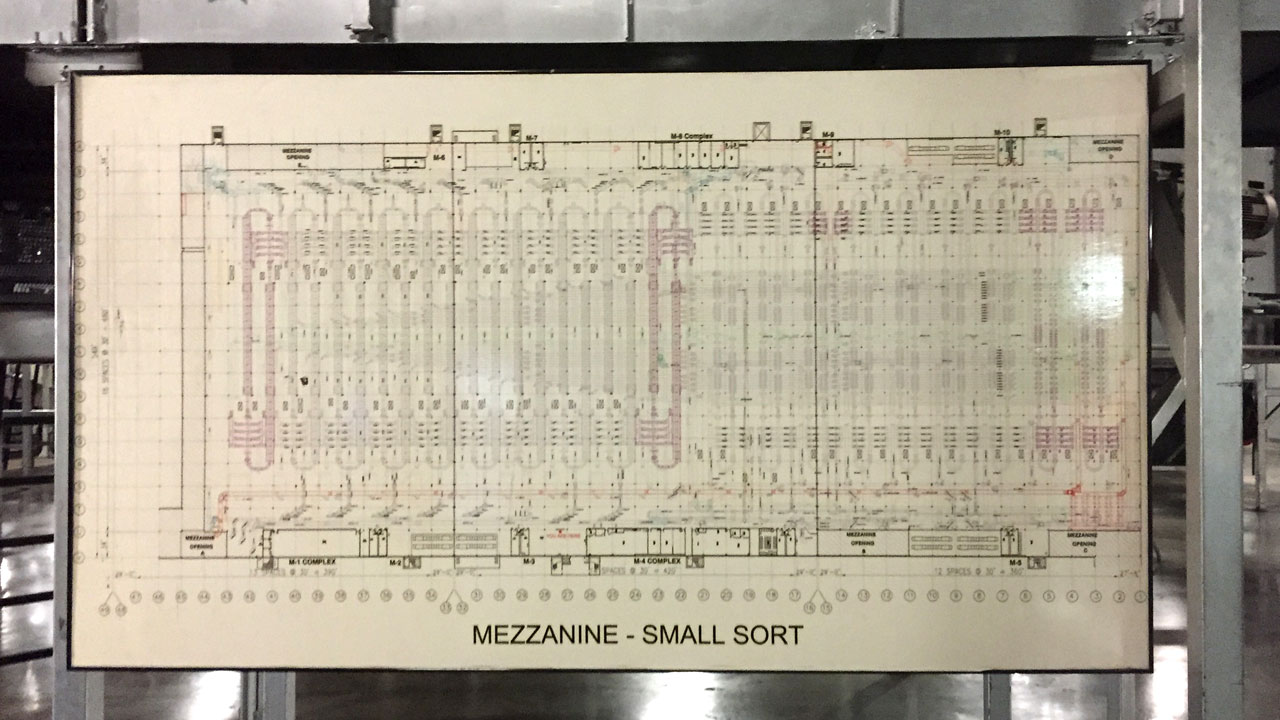
Small sort was, to me, surprisingly human intensive. It was, for example, someone’s job to just feed packages onto one of the trays below.

Then, scanners read the labels and automatically tilted them into the proper bagging location by zip code. There are 3,700 bagging locations. When a bag is full, a red light alerts another worker, who prints out a label and closes each bag.
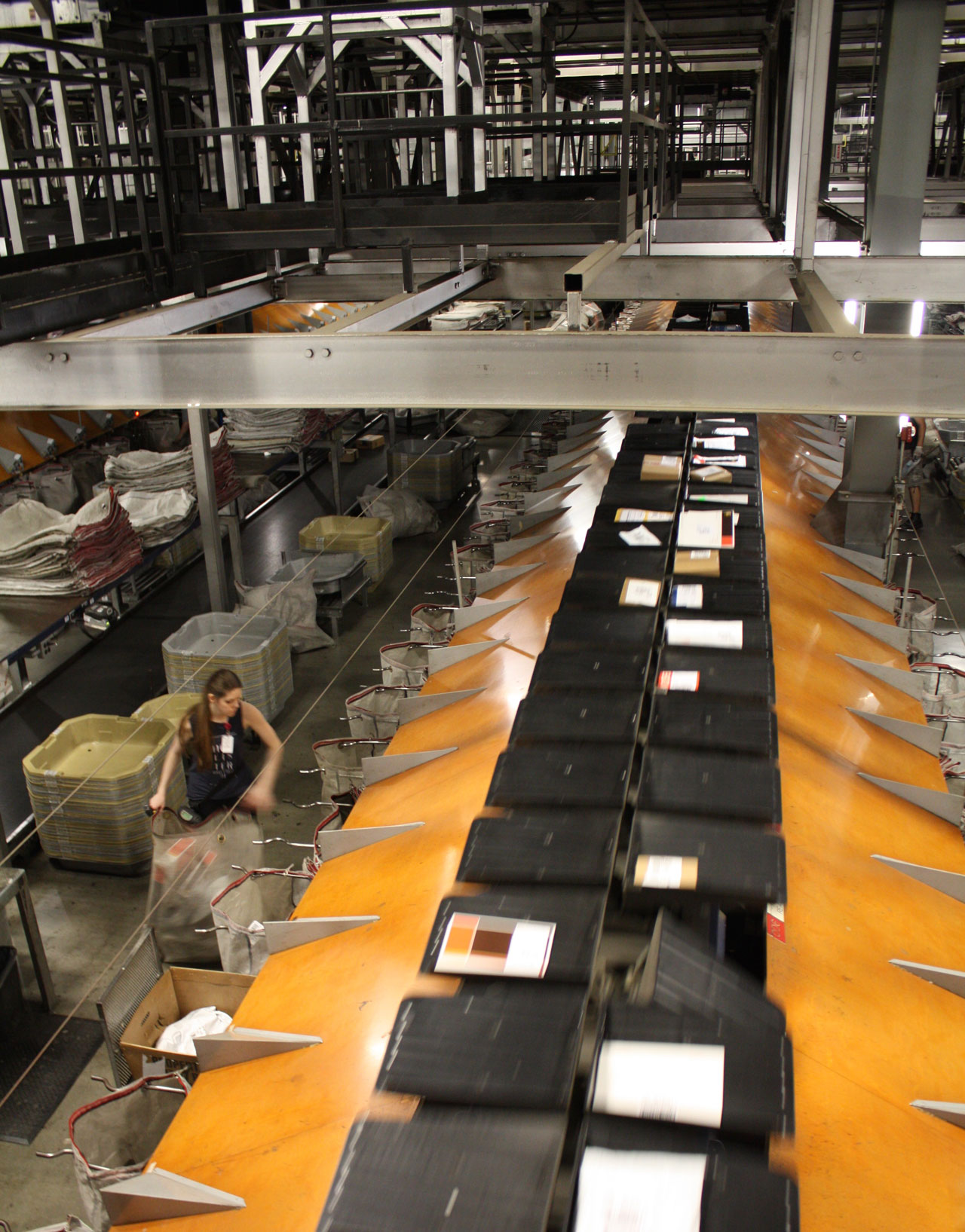
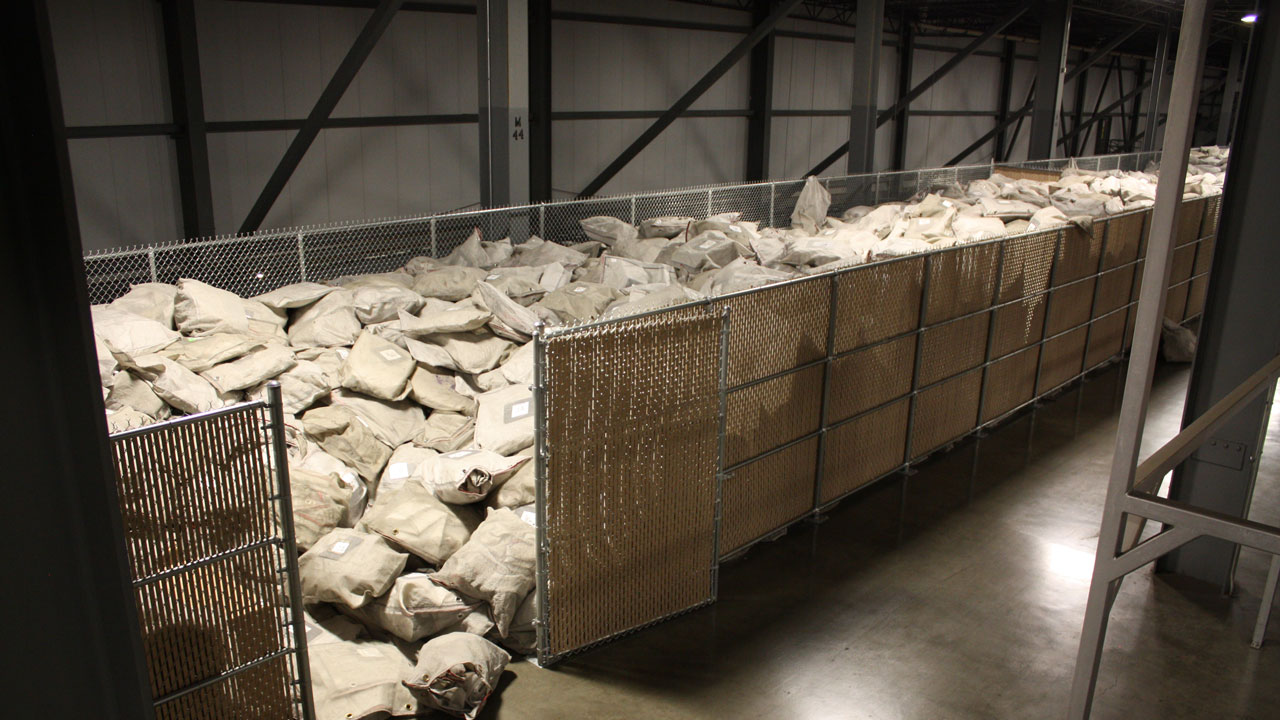
Andrew Cooper, a systems engineering manager, was also quick to point out what might seem like a small innovation: a small printer at the hips of each worker manning the bagging stations. It used to be that a worker had to walk over to a printer to pick up the label for each full bag. The hip-side printer shaves off a few seconds off each bag — which is the exactly kind of thing you think about when you’re sorting thousands of packages a minute.
The large packages go into an entirely automated part of the building, no humans at all. UPS likes to say that if all goes smoothly, a package is only touched by human hands twice in sorting: once when it’s unloaded from the ULD and once when it’s loaded again.

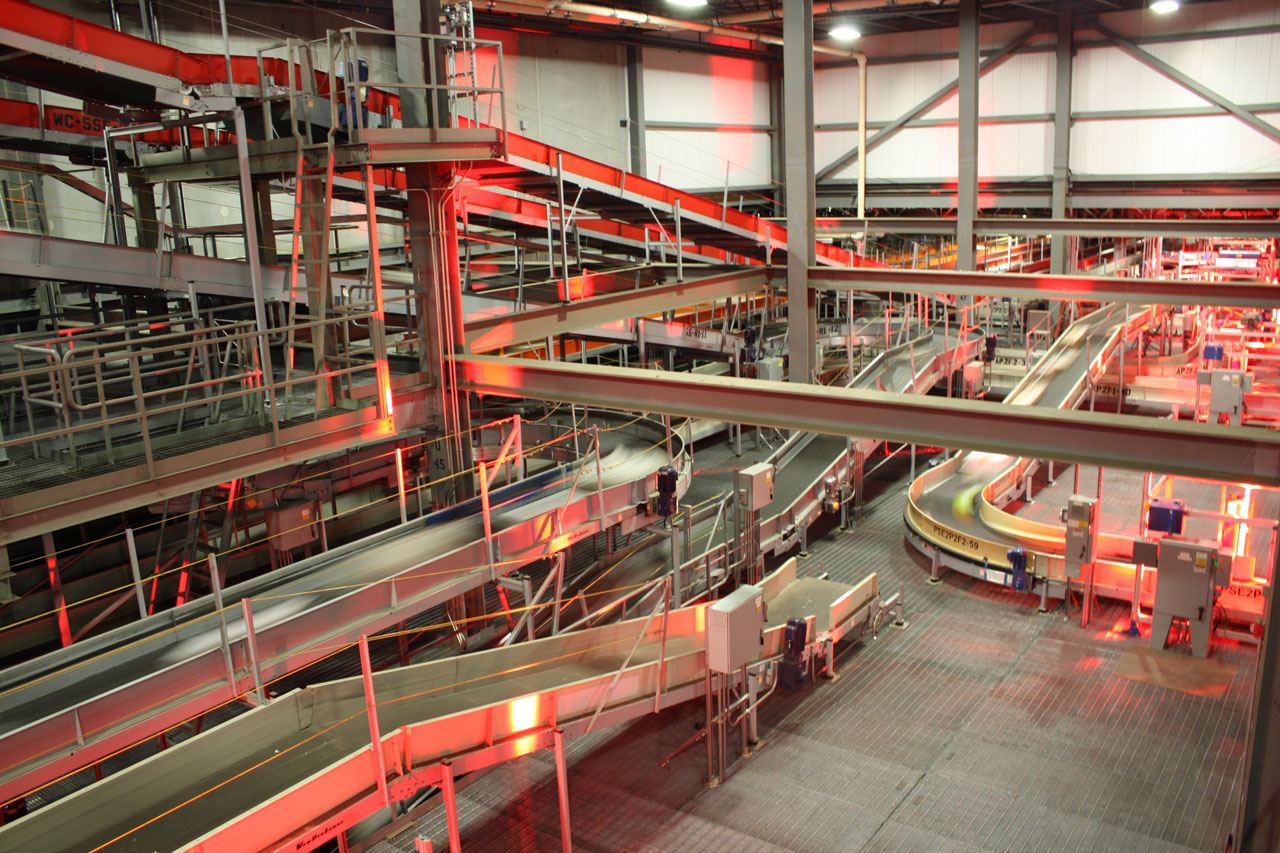
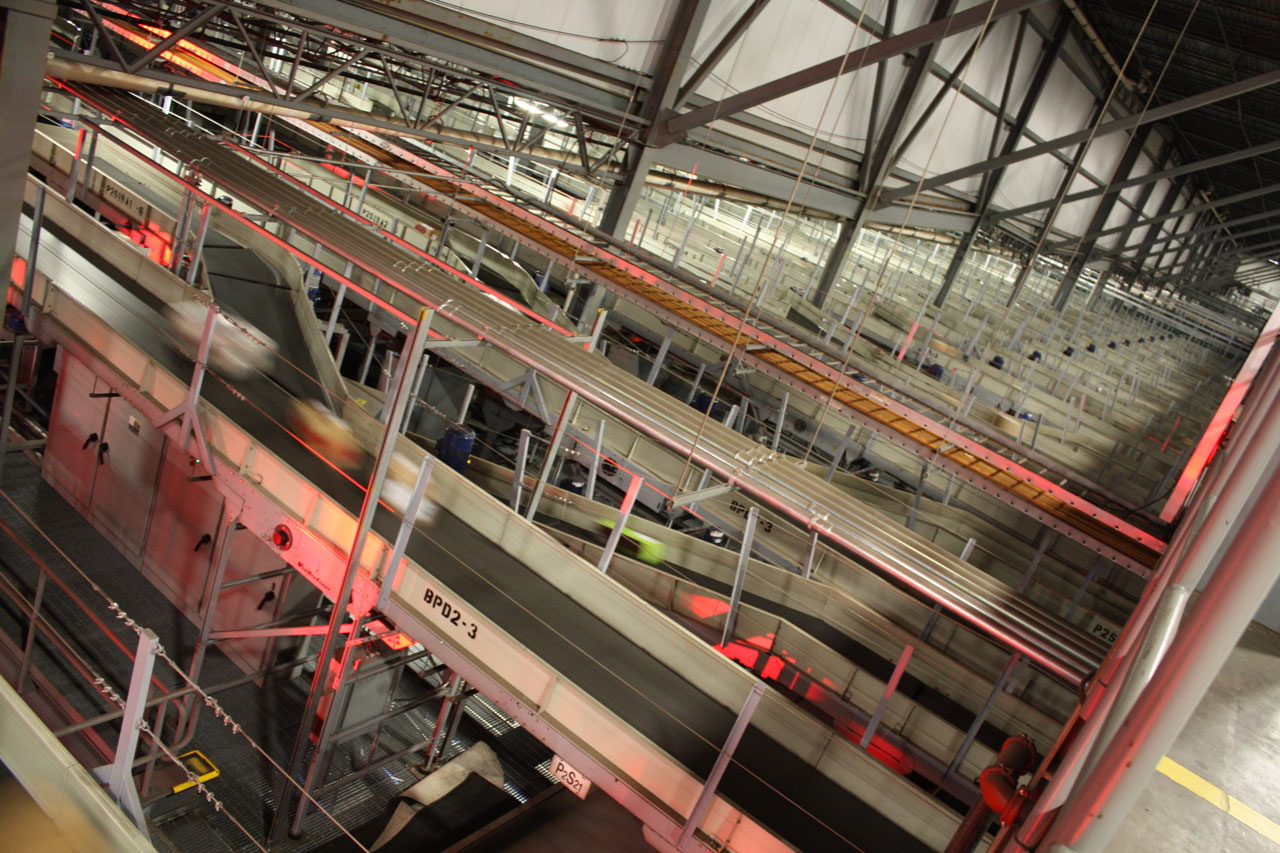
As I looked out into this metal maze devoid of humans, I couldn’t help but think that this was the future. UPS may tout technology that helps their human workers now, like the personal printer, but a robot workforce that did not get sick or sleepy or injured seemed to have obvious appeal.
And it’s not just manual labour that automation has replaced. Andrew started on the sort floor decades ago. “It was a lot of zip codes,” he says, remembering the days when workers had to recognise zip codes to sort them by destination. Now, the college kids don’t need to know zip codes; they just need to walk where the indefatigable computer tells them.
For now, UPS has a ready workforce of young and healthy college students. It makes sense for them to keep employing them. But what about when the economics shift and technology gets better? Who knows.
But the package sorting will go on. The bags of small sorts and the parcels are all packed into Universal Load Devices again. ULDs are loaded back onto planes. The planes fly off. A UPS truck brings a package to your door.
